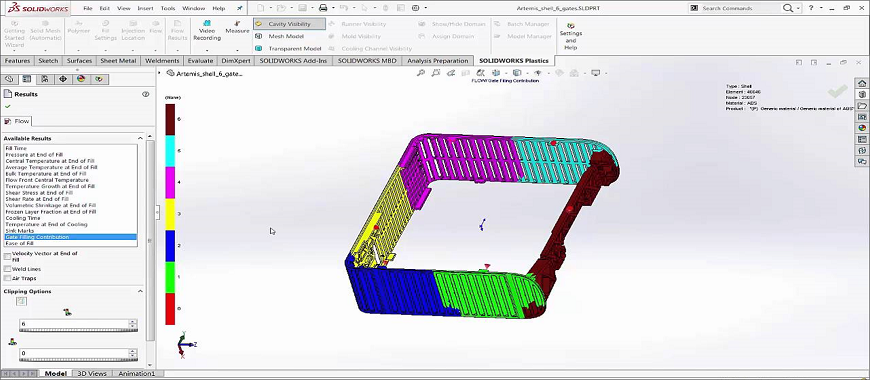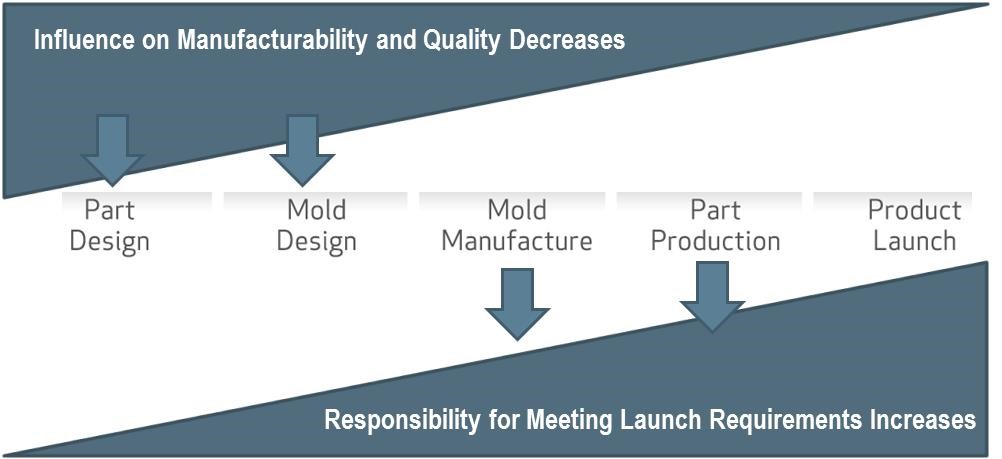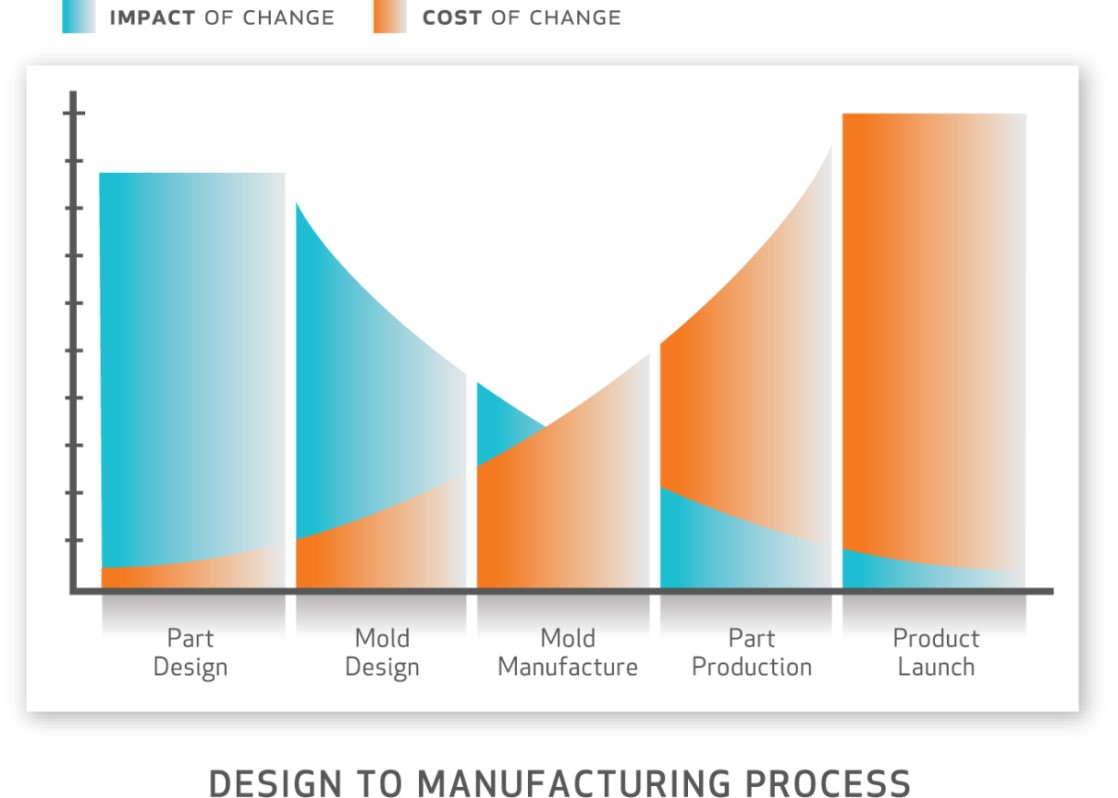
Historical Plastics Development Process

When we take a look at the injection molding design-to-manufacturing process, historically it’s been people downstream in the manufacturing environments that have been tasked with making sure parts meet manufacturability, quality, and launch requirements.
In other words, part designers have not had a significant influence on the manufacturability of their designs because it’s often someone downstream that’s responsible for running simulation to determine whether or not a part design can be easily manufactured.
Old Way #1 – Fix Existing Problems

Problems are fixed after the fact. This is costly and inefficient.
In fact, in a very common worst-case scenario still seen today, simulation is not used until after manufacturing defects are discovered.
A single simulation analyst troubleshoots the problem and determines a solution given existing constraints, for example, the part design is fixed, the mold design might be fixed, the material cannot be changed, etc.
Of course, even if the analyst is successful, valuable time and material are wasted, driving up costs and pushing out product launch dates.
Old Way #2 – Validate Existing Designs

The Limited application provides benefits to a small number of parts and there are hidden costs due to the lack of optimization.
The next logical step is to validate existing part or mold designs to ensure manufacturability and avoid time-consuming and costly production delays.
While this results in more value realized from the use of simulation, there is still the potential for significant hidden costs because parts and molds are not being optimized. For example, without optimization, companies are not determining if the parts could be made thinner – reducing material usage, decreasing cycle times, using less energy, and lowering overall costs.
Preferred Way – Optimize Part & Mold Design

Using simulation as an integral part of the part and mold design process provides the ability to optimize designs for manufacturability.
Today, world-class companies are using simulation the “new way” – in the earliest stages of part and mold design allowing more users to optimize more designs.
So regardless of what phase of the process a product development team member is involved in, they can take advantage of simulation to ensure that their part design or their mold design is optimized to produce the highest quality parts in the least amount of time and at the lowest cost.
Cost of Change versus Impact of Change

Why should you be concerned about using SOLIDWORKS Plastics during the earliest stages of design? Because that’s when the cost of change is least and the impact of that change is the highest. In other words, when you make changes during part design, it’s to a 3D CAD model, but if you have to make those changes during part production, you might be re-welding and cutting steel – a very costly and time-consuming process. And because of the inherited constraints, the changes you make at that point may have little to no effect on the manufacturability of the part.
Introducing SOLIDWORKS Plastics
That’s why we’re introducing SOLIDWORKS Plastics - For companies that design plastic parts or injection molds, SOLIDWORKS Plastics software helps users predict and avoid manufacturing defects during the earliest stages of part and mold design, eliminating costly mold rework, improving part quality, and decreasing time to market.
And the value proposition is simple – 80% of plastic parts are injection molded; the process is a complex mix of time, temperature, pressure, material, and tooling variables; injection molds can range in cost from tens of thousands to hundreds of thousands to over $1M, meaning mistakes are very expensive and time-consuming.
The Great thing about SOLIDWORKS Plastics is that using it on just one project can justify the cost of the software.
Using SOLIDWORKS Plastics Simulation to Avoid Just One Round of Mold Rework can result in a Positive ROI.
To Get SOLIDWORKS Plastic solutions, please contact Engineering Technique – an Authorized SOLIDWORKS Reseller in Gujarat (India).
Read also:
• How SOLIDWORKS Plastics Enhances Manufacturing Design and its Quality
• SOLIDWORKS Plastics: Perform a Simulation to Analyze Injection Moulds and Plastic Parts
• Best Practices of Injection Molded Plastics Part Design
